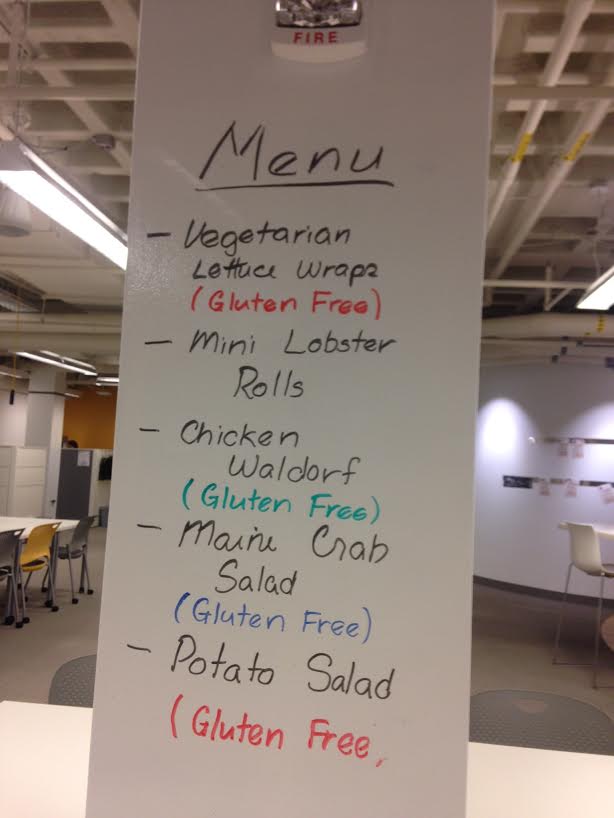
I Saw You I-Lab
It’s a quiet Friday afternoon, and Thomas the Tank Engine is playing on what I can only assume is at least a 52-inch television screen. Someone’s child—or, more likely, Cambridge’s youngest innovator—watches lazily while licking chocolate off his upper lip and fiddling with a half dozen keurig pods.
Welcome to the i-lab.
Located just behind the Business School, at 125 Western Ave, the i-lab—or Harvard Innovation Lab—was started in 2011 as a resource for entrepreneurs and innovators in the greater Boston area.
In general appearance, the i-lab is what you might imagine Google’s headquarters or Elon Musk’s home offices to look like. It’s a lot of open space, white walls, egg-shaped chairs, and smart people drinking coffee. I am relieved to see the “Hi” sign at the entrance. I’ve walked 20 minutes to get here, because I’m still not innovative enough to figure out the shuttle schedule.
Usually, the space isn’t so quiet.
In a couple of weeks the i-lab will be bustling with people. Over 80 teams of venture capitalists will swarm the site to participate in the i-lab’s Venture Incubation Program. These projects are diverse and incredibly imaginative: sprayable cakes, a gluten-free snack made of crickets, some sort of complicated medical technology, and an app that helps you get day labor to assemble things like Ikea furniture.
The i-lab boasts 30,000 feet of space, 250 work stations, over 24 conference rooms, and a kitchen. I’m especially interested in the kitchen. I have come for the free food, and to play Rock Band on the i-lab’s Xbox. I feel entitled to this, because I assume that this is what my tuition is paying for.
As it turns out, my tuition doesn’t flow directly into the i-lab. Rather, the i-lab is funded by a combination of anonymous benefactors and universities. Or so I am told, when I ask one coordinator where the big money is coming from.
There are a few open tables in the front of the room, and because it’s in the i-lab, they have a fancy name: the Day Use space. The tables are for people like me. Harvard students (undergraduates or graduates) who aren’t involved in an “incubation team” and just come to eat the free Easy Mac and make cherry-lemonade-diet-vanilla-coke with the soda machine.
With the high-tech aspartame machine and abundance of ramen, the words More Healthy Snacks on the suggestion dry erase wall should come as no surprise. But the i-labbers have other suggestions too, including the addition of bouncy ball chairs and a treadmill desk. I should point out that there is another wall featuring third world problems—a giant infographic about the worldwide prevalence of AIDS and STIs.
I should also point out that the i-lab already has a treadmill desk. It is in room 156, but it is reserved for the afternoon. Perhaps someone should ask for another one, because our young innovator, having lost interest in the television and the chocolate on his upper lip, has taken to running around the floor.
During his second lap, we make eye contact. I try to smile at him in a way that won’t make his parents excessively nervous as I toss a handful of Starbursts in my pocket for later. We are sharing not just a moment, but also flashy toys and an endless supply of Jolly Ranchers—I too have come to the i-lab to play.



